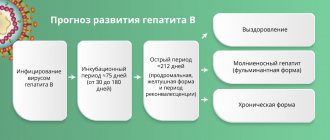Diabetes mellitus is a disease that requires constant monitoring of sugar levels. Sometimes the patient needs to find out the value several times during the day.
In such a situation, it is impossible to go to a medical facility every time. For people who have this problem, the solution is to have their own glucometer.
When performing the test at home, it is very important that all conditions for performing the test and operating the device are met; for this, before starting, you need to learn how to use the glucometer.
The device is not difficult to use, but has several important rules
Why do you need to control sugar?
Sugar or glucose is one of the main substances that affects the functioning of the human body, regulating vital processes. Glucose is a source of energy, and its norm is the key to normal functioning of organs and good health.
Important: like any other substance, glucose must be contained in a strictly defined amount.
If glucose levels are reduced, then the body lacks energy, processes slow down, and a change in overall well-being occurs. When it rises, the body suffers from its excessive amount, a condition comparable to poisoning occurs - glucose becomes poison for the body, all organs begin to work differently. With prolonged increase, complications develop.
Test strips must be stored under special conditions
An indicator of the development of diabetes mellitus is a deviation from normal indicators.
Table No. 1. Normal blood sugar levels for an adult:
| Minimum normal level | Maximum normal level |
| 4.1 mmol/l | 5.9 mmol/l |
Even blood sugar values in a healthy person fluctuate depending on food intake, several times during the day. In a person with problems, all these fluctuations need to be controlled. For this, a sick person should get a home glucometer.
Don't forget about memory!
The expert considers the memory of a glucometer to be one of the important parameters: “It is important that the device remembers the result, date and time of the analysis. For example. Our Satellite Express stores up to 60 of the latest results. For the attending physician, and the diabetic himself, it is very important to be able to perform a statistical analysis of measurements, as well as systematize data for further monitoring of indicators. This makes it possible to predict events to some extent and make important decisions related to treatment adjustments.”
Types of glucometers
There are currently two main types of devices.
Table No. 2. Types of glucometers:
| Type name | Device Feature |
| Electrochemical | An electric current is used to measure glucose levels, this way the reaction of glucose with the reagents contained in the test strip is checked. |
| Photometric | Analyze how the light flow passes through a strip with a drop of blood interacting with reagents. These models are very difficult to use and require careful handling. |
There are no major differences between these types of devices that would influence the patient's choice. However, photometric models are considered outdated, since electrochemical analyzers show greater accuracy when conducting research.
Therefore, modern glucometers use electric current for analysis; the most famous models are the following:
- Accu Chek (Accu Chek);
- Satellite;
- Vehicle circuit;
- iCheck (Ai Check);
- Finetest (Finetest);
- Diacont.
When choosing a model, you need to find out how much the strips will cost
Some glucometers have a large number of variations for different categories of patients - lightweight, budget models and those that do not require the use of strips, for example, Accu Chek. There are quite a lot of videos on using the device of this brand on the Internet, since today it is the most popular.
The next model is positioned as requiring a minimal amount of blood compared to other brands and has a long shelf life of the strips - up to 18 months, this is the Ai Chek glucometer. It’s not difficult to figure out how to use this device; it has a classic way of working.
The device, called Finetest, is positioned as a model for people with low vision, as it has a large screen. Additionally, the device allows you to store information about several patients in its memory, this can be useful for families where there are several patients with diabetes.
If a doctor prescribes a Finetest glucometer for use, how to use it and how often to take measurements, you need to check with a specialist.
How to lower glucose levels
To reduce high glycemic levels, you must adhere to the following rules.
- Follow a strict diet. Eliminate fried, smoked, salty and spicy foods from your diet. Reduce the amount of flour and sweets. Include vegetables, cereals, lean meat and dairy products in the menu.
- Do physical exercise.
- Visit your endocrinologist regularly and listen to his recommendations.
- In some cases, insulin injections may be required. The dose of the drug depends on weight, age and severity of the disease.
The World Health Organization (WHO) recommends testing every 3 years after age 40. If you are at risk (overweight, have relatives with diabetes), then annually. This allows you not to start the disease and not lead to complications.
Basic rules of use
You should always record the result, this is important for drawing up a picture of glucose fluctuations
Fortunately, there are currently a large number of glucometers on the market. They are manufactured by different companies and may differ in some operating features, but there are several general rules on how to properly use a glucometer so that the patient can get the most reliable result.
General operating rules for most devices:
- Device storage rules are described for each device in the attached instructions. But the main points must be observed - there should be no mechanical impacts on the device, the glucometer should not be affected by low and high temperatures, and it is also not recommended to move the device between contrasting temperature conditions. Water and high humidity are detrimental not only to the glucometer itself, but also to the test strips, without which it is impossible to obtain a result.
- Compliance with aseptic rules is important for the safety of the patient. The material is collected after the skin is punctured; to do this, it should be cleaned using disposable alcohol wipes or a special solution and sterile material. To perform a puncture, you can only use disposable sterile needles.
- The fingertips are most often used to take material; it is acceptable to use the skin area on the abdomen or forearm.
- How often blood glucose levels need to be measured is determined by the attending physician based on the patient’s health status and the characteristics of a particular disease.
- Since a glucometer is a home research method, there is always a possibility that the device may show results that deviate from reliability. To check the accuracy of the device, it is recommended to compare it with an analysis performed in a medical facility. This will help identify inaccuracies when using the meter for a long time and check whether the new device is working correctly. This reconciliation should be performed once a week.
Important: if you violate the methods of using the device, the result may turn out to be unreliable, which threatens the patient with problems.
There are many models of glucometers, a doctor’s advice when choosing will not be superfluous
Analysis sequence
Important: each device requires periodic cleaning in accordance with its personal instructions for use.
To obtain a reliable result, you need to know how to use a glucometer; the most important thing is to strictly follow the recommended sequence of actions:
- You need to insert a needle into the part of the glucometer that is used to puncture. In some models, the puncture is supposed to be done using a special handle, then the needle must be installed in a special groove on this handle. Next you need to determine how deep the puncture will be made. The shallower the depth, the less painful the sensation, but the greater the likelihood that blood may not come out at all.
- You need to turn on the glucometer and wait for a signal that the equipment is ready for testing.
- The selected area of skin must be disinfected and punctured.
- The resulting drop of blood must fall on the strip, then the device performs diagnostics. You should not smear the blood on the strip; just touching the strip to a drop of material is enough.
- The device analyzes the material for the required time and produces a result. If the device displays error information, the test must be repeated.
If the patient is using a glucometer for the first time and does not yet know how to use the glucometer correctly, the video will help you figure it out. It is worth choosing videos from the official device manufacturer for a specific model.
Frequency of application
By saving on measurements, you will then have to fork out for treatment
Among people with diabetes, there are invariably those who try to take measurements less often in order to save on test strips and other derivatives of the device, neglecting the doctor’s instructions. This approach is dangerous, because the lack of high-quality control over the state of glucose can lead to complications with long-term high sugar. This can damage the central organs and systems of the body.
Important: the device itself and other elements for it must be stored out of the reach of children.
Although the frequency is determined individually by your doctor, there are general guidelines for testing your glucose levels.
Table No. 3. How often should measurements be taken:
| Features of the disease | Measurement frequency |
| Diabetes mellitus type 1 | Three to four times every 24 hours |
| Diabetes mellitus type 2 | Twice every 24 hours, before breakfast and before lunch |
| With sharp fluctuations in indicators, and in the early stages of diabetes or in the absence of control over glucose levels | In this case, the more often the measurement is carried out, the better for the patient. The permissible number of measurements within 24 hours is 8 times. It is worth measuring before meals, two hours after, five hours later, on an empty stomach, early in the morning and late at night. When the sugar level is normalized, the number of measurements can be reduced. |
Important: it is worth taking measurements more often during pregnancy, when moving, when physical activity increases, and when respiratory and other diseases occur.
At first, the patient will have to take measurements quite often, but this will give the patient and the attending physician an opportunity to understand how the disease progresses and how the body reacts to treatment and food intake.
The role and exclusivity of the CGMS method
Any adjustment to therapy can only be based on reliable data, and the CGMS method is becoming an integral part of the management of patients with impaired carbohydrate metabolism. It should be noted that the possibilities of using the method are not limited only to patients with diabetes. With its help, you can diagnose hypoglycemic conditions in people who do not suffer from diabetes, as well as analyze changes in glycemia in obese patients and detect carbohydrate metabolism disorders at the earliest stages.
In patients with diabetes mellitus, the technique is used to diagnose the following conditions:
- postprandial hyperglycemia, which allows us to evaluate the effectiveness of glucose-lowering therapy and the rate of absorption of various carbohydrates;
- nocturnal hypoglycemia;
- blood sugar response to physical activity;
- hidden asymptomatic hypoglycemia, etc.
The collected and analyzed information makes it possible to individually adjust therapy, the frequency and time of taking glucose-lowering drugs, the schedule and degree of physical activity and, of course, nutrition, its qualitative and quantitative characteristics.
Repeated monitoring of glycemia after correction of therapy allows you to objectively assess the effectiveness of changes (Fig. 7).
Fig. 7: CGMS data after correction of therapy and regimen: target glycemic values achieved
Additional features of glucometers
Some models can synchronize with a smartphone
Important: you must check whether the strips are suitable for use; if the expiration date has expired, you should purchase new ones.
Along with measuring glucose levels, these devices have additional capabilities:
- store previous measurements in your memory;
- audible warning signal in case of significant deviation of indicators;
- connection and synchronization of the device with a personal computer to create an archive of measurements;
- blood pressure measurement;
- voicing the result for people with vision problems;
- additional testing of cholesterol levels.
It is natural that the presence of additional functions increases the cost of the device. Before purchasing, you should decide how much a person needs this or that additional ability of the glucometer.
Important: you can independently check how accurate the device is; to do this, you need to take the measurement three times in a row, and the deviation should not exceed 10%.
Can a glucometer work in conjunction with a mobile phone as a self-monitoring diary?
The modern Contour Plus One meter can communicate with the Contour Diabetes mobile phone application, which directly records data from the Contour Plus One meter using Bluetooth® technology. In addition, in this application you can enter data on nutrition (even take a photo of your breakfast, lunch or dinner), doses and times of administration of insulin or glucose-lowering drugs, time, intensity and duration of physical activity, etc. The Contour Diabitis application tracks levels blood glucose, compares them with the time of insulin administration, nutrition and physical activity, identifies typical fluctuations in blood glucose and tells the user what exactly could be causing these fluctuations.
Deviation of indicators
Important: spare strips and batteries should always be available.
If the patient carries out the analysis according to the instructions, but during testing it is revealed that the measurement is erroneous, then the reason may be certain situations.
Modern models allow you to lead a familiar lifestyle
Table No. 4. Reasons for incorrect measurement:
| Cause | The essence of the problem |
| Blood | For the test to be successful, the glucometer must receive a sufficient amount of blood; if there is not enough blood, the results may be distorted. If the patient’s blood circulation is impaired or the temperature is low, then when washing your hands, warm them while lowering them to improve blood circulation. To release a sufficient amount of blood, you can make a puncture not in the middle of the pad, but a little on the side. |
| Test strips | The strips are very sensitive to the storage method. They should not come into contact with moisture or direct sunlight. If the strip was stored incorrectly or accidentally damaged, the result will be unreliable. |
| Glucometer | Even if all conditions of use and maintenance are met, the device may fail due to electronic malfunction. For periodic checking, you can use a special control strip or test liquid. Both methods must be approved by the instructions for use. |
In order to avoid making mistakes during operation, you need to familiarize yourself not only with the video on how to use the glucometer, but also with videos on proper maintenance and storage of the device.
Device coding
Coding a glucometer is a procedure on which the accuracy of the results obtained depends. It allows you to bring the device itself and the test strips that come with it into maximum compliance. Older models required manual coding. It was replaced by electronic chips.
The most advanced devices do not require coding. It occurs automatically when the test strip enters the housing. The glucometer reads the code and configures itself.
No Coding technology was developed because it became apparent that most patients were not completing the necessary adjustments. The coding procedure cannot be ignored, since the accuracy of measurements is reduced. As a result, it is not possible to accurately determine the dose of insulin that needs to be administered to the patient.
Where can I perform continuous glycemic monitoring?
At the Moscow multidisciplinary CELT clinic, 24-hour glycemic monitoring is performed using an iPro Medtronic device (USA) on an outpatient basis.
The cost of the study includes:
- disposable sensor;
- system installation;
- remote support by a doctor during the entire period of the study;
- interpretation of data and consultation with an endocrinologist.
The installation of the CGMS monitor and interpretation of the study results at the CELT clinic is carried out by an endocrinologist. After decoding the data, the patient receives recommendations for correcting nutrition, lifestyle, and treatment.
You can make an appointment for a consultation by calling the CELT helpline.
Nuances influencing the choice of model
When choosing a glucometer for a diabetic, the endocrinologist takes into account the following factors:
- planned frequency of use,
- price of the device, test plate and other consumables,
- patient's age,
- ease of use,
- ease of replacing batteries, their service life and price,
- size of the device, display and image,
- availability of memory, ability to communicate with a computer,
- whether or not there is a need to wipe off blood from the test field of the strip,
- Is the device able to signal errors and carry out quality control of the measurements made,
- the scope of the manufacturer's warranty and their availability in your city.
Kinds
It is permissible to use both very simple and more modernized models of analyzers. Recently, photometric devices that measure changes in the light flux passing through a test plate coated with a special solution have been gradually phased out. In this case, calibration of a glucometer of this type is carried out using whole capillary blood. As practice shows, this method does not always pay off.
Considering the impressive measurement error of such analyzers, experts are inclined to believe that measuring sugar with a glucometer operating on the photodynamic principle is not entirely appropriate and even dangerous. Today, you can purchase more modern glucometers for individual use in the pharmacy chain, which produce a much lower error rate:
- optical biosensors for glucose – work based on the phenomenon of plasma surface resonance;
- electrochemical - measure the main indicators of glycemia according to the magnitude of the passing current;
- Raman - are among the non-invasive glucometers that do not require puncture of the skin; they determine glycemia by isolating its spectrum from the full spectrum of the skin.









